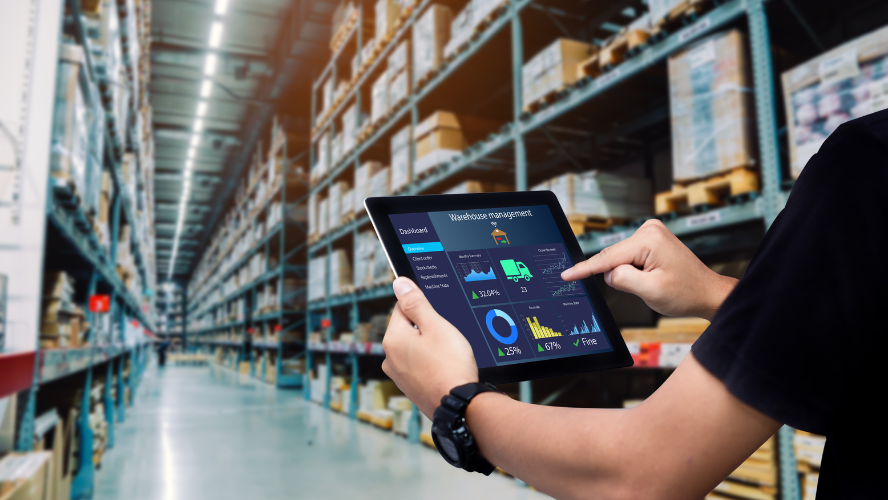Warehouse occupiers are navigating a complex operating environment. Geopolitical tensions, changing tariff regimes and climate-related disruption are reshaping how goods move across borders. At the same time, inflationary pressures and slowing global economic growth are challenging occupiers to do more with less.
Warehousing sits at the heart of this challenge, with companies facing rising costs, labour shortages and growing pressure to build resilience. In response, retailers and manufacturers in several markets are increasingly turning to third-party logistics providers (3PLs), whose role in the sector continues to expand. At the same time, these market pressures are accelerating the adoption of automation and AI in warehouse operations.
3PLs are becoming more popular
The adoption of outsourcing varies between markets. 3PL use is currently rising fastest in the US, where 3PLs represented 42% of total warehouse take-up in the second quarter of 2025 – a rise of 12% year-on-year. “In the US, uncertainty around tariffs and trading conditions has made it challenging for occupiers to commit to long-term strategies,” says Gregg Healy, Executive Vice President, Head of Industrial Services, North America, Savills. “Many are turning to 3PLs as a short-term solution, allowing them to stay flexible. It’s a way to bridge the uncertainty while still meeting customer expectations for speed and reliability.”
Asia Pacific shows a pattern of steady, long-term growth, with 3PLs making up 46% of total warehouse take-up in Q2 2025. In Europe, the equivalent figure was around 33%, but 3PL use has been climbing gradually over the past two years.
“We’re seeing some occupiers move towards 3PLs because of the clear cost and efficiency benefits, but many are reluctant to lose control over how their business is managed,” says Sam Quellyn-Roberts, Global Occupier Services Director, EMEA logistics markets at Savills. “For those with existing networks, it becomes a balancing act between consolidating their own operations and outsourcing parts to a 3PL. The real challenge is finding a model that delivers savings and supply chain resilience without sacrificing identity or oversight.”
Outsourcing to 3PLs can be a short-term reaction to trading conditions. For example, in 2023 and 2024 there was a trend towards slowing or reduced reliance on 3PLs in Europe and the US, as the market adjusted to post-pandemic conditions and a slower pace of e-commerce growth. But the appeal of a logistics partner is broadening as they expand the services they offer.
Proportion of take-up by 3PLs (% of area)
Source: Savills Research
Outsourcing can provide flexibility, enabling businesses to reposition stock, diversify their supply chains and scale operations up or down as needed. 3PLs can also offer cost savings and labour management, as well as access to advanced technology without the need for significant capital expenditure upfront.
Increasingly 3PLs now offer AI-powered demand forecasting, real-time visibility platforms and sustainable solutions such as electrified fleets. As a result, they are gravitating towards prime assets with modern automation, digital systems and strong ESG credentials. In the UK, 86% of 3PL leasing deals in 2024 were for prime warehouses, increasing 22% on the previous year.
However, outsourcing is not without risk. 3PL relationships typically involve shorter contracts. Frequent switching between providers can lead to integration challenges, dilute control over end-customers’ experience and create the potential for service disruption. Other risks include discrepancies in service expectations and reduced visibility of day-to-day operations. To address systems integration challenges, some 3PLs are developing more advanced platforms, including AI-powered solutions that better connect clients’ existing IT systems with their logistics operations.
Warehouse labour costs and scarcity
Labour costs and availability are some of the most significant challenges warehouse occupiers face. Over the past five years, it has generally become harder for businesses to find warehouse workers and more expensive to employ them. And in an era of trading disruptions, this presents strategic risk, as supply chain bottlenecks linked to workforce shortages add another layer of vulnerability.
Labour is one of the largest costs for warehouse occupiers, alongside real estate and equipment. Globally, average hourly wages for warehouse workers have risen 24% since 2019, reflecting labour shortages, broader wage inflation and the impact of government policies in some locations. In the US, advertised hourly wages jumped 35% to $20.81 in 2025, up from $15.38 in 2019, and outpacing inflation. And in the UK, the National Living Wage rate for workers aged 21 and over increased minimum pay by 6.7% from April 2025, lifting wage levels for many warehouse workers.
Warehouse labour costs, by region
Source: Savills Research
* Average advertised salary per hour for warehouse operatives
Labour scarcity is equally pressing. It is difficult to recruit warehouse workers in many Western markets due to an ageing workforce and shifting generational expectations. Younger workers are less willing to accept the irregular shift patterns that underpin the 24/7 operations required to keep pace with modern e-commerce demand.
Transport faces similar challenges. According to the IRU, a global road transport organisation, there will be 745,000 unfilled commercial truck driver positions in Europe by 2028, up from 426,000 in 2024. Similar shortages affect the US and China, with the latter set to have almost 5 million unfilled positions by 2028. High employee turnover compounds the issue. Warehousing jobs are often fluid, with workers frequently switching roles or sectors, increasing recruitment and training costs and operational disruption.
Automation, robotics and AI boost warehouse efficiency
Labour challenges, together with broader economic and geopolitical pressures, are accelerating the adoption of automation and AI in warehouses. Robotics, AI-driven inventory management and automated storage/handling systems can help to insulate operations from disruption by enhancing efficiency, reducing reliance on manual labour and increasing speed and accuracy. China is one market that’s embracing these technologies. “Within Asia, China has led the way in the deployment of warehouse automation,” says John Talbot, CEO, LCA Savills. “We’re now seeing rapidly growing uptake across other Asian markets in response to increasing property costs, rising labour costs and labour scarcity.”
Some occupiers are investing in robotic solutions such as automated guided vehicles to semi-automate existing manual operations, particularly in older warehouses with a high level of labour-intensive picking and packing processes. For newer warehouses, occupiers want automation to be built in – with the internet connectivity and increased power reliability. Specifications increasingly include features such as higher eaves for multi-level automation systems and smoother mezzanine floors to aid robot mobility.
Driverless truck technology is also advancing. Early pilot versions focus on controlled routes such as port-to-warehouse corridors, where autonomous fleets can improve reliability and offset driver shortages. As technology matures, integration with warehouse automation promises smooth end-to-end goods movement, further lowering costs and enhancing supply chain resilience.
These new technologies can also support sustainability efforts by optimising energy use and reducing waste. AI-led efficiency gains can offer occupiers a way to meet ESG targets even in cost-constrained times.
The workforce is evolving accordingly. Traditional roles are giving way to new positions in digital operations, data analytics and systems integration. Warehousing workforces will become smaller, but more specialised.
But new risks are also emerging. As logistics systems move to the cloud and devices connected to the Internet of Things, cybersecurity is a growing concern. The World Economic Forum’s Global Cybersecurity Outlook 2025 Report highlights supply chain cyberattacks as one of the fastest-growing global risks. In response, logistics companies are beginning to collaborate more closely with law enforcement and cybersecurity specialists to share intelligence, improve resilience and protect against attacks.
What will the warehouse of the future look like?
In future warehouses will be leaner and smarter, powered by technology and designed with environmental sustainability in mind. At the same time, 3PLs are likely to continue expanding their role, providing retailers and manufacturers with flexibility, access to advanced technology and support in meeting their ESG goals.
“Rising costs, political shifts, evolving consumer demands and rapid advances in technology are forcing occupiers to rethink their strategies,” says Healy. “For many, 3PLs offer the flexibility, expertise and scale they need. But the challenge lies in striking the right balance between control and outsourcing – a balance that’s critical to the success of global supply chains.”



